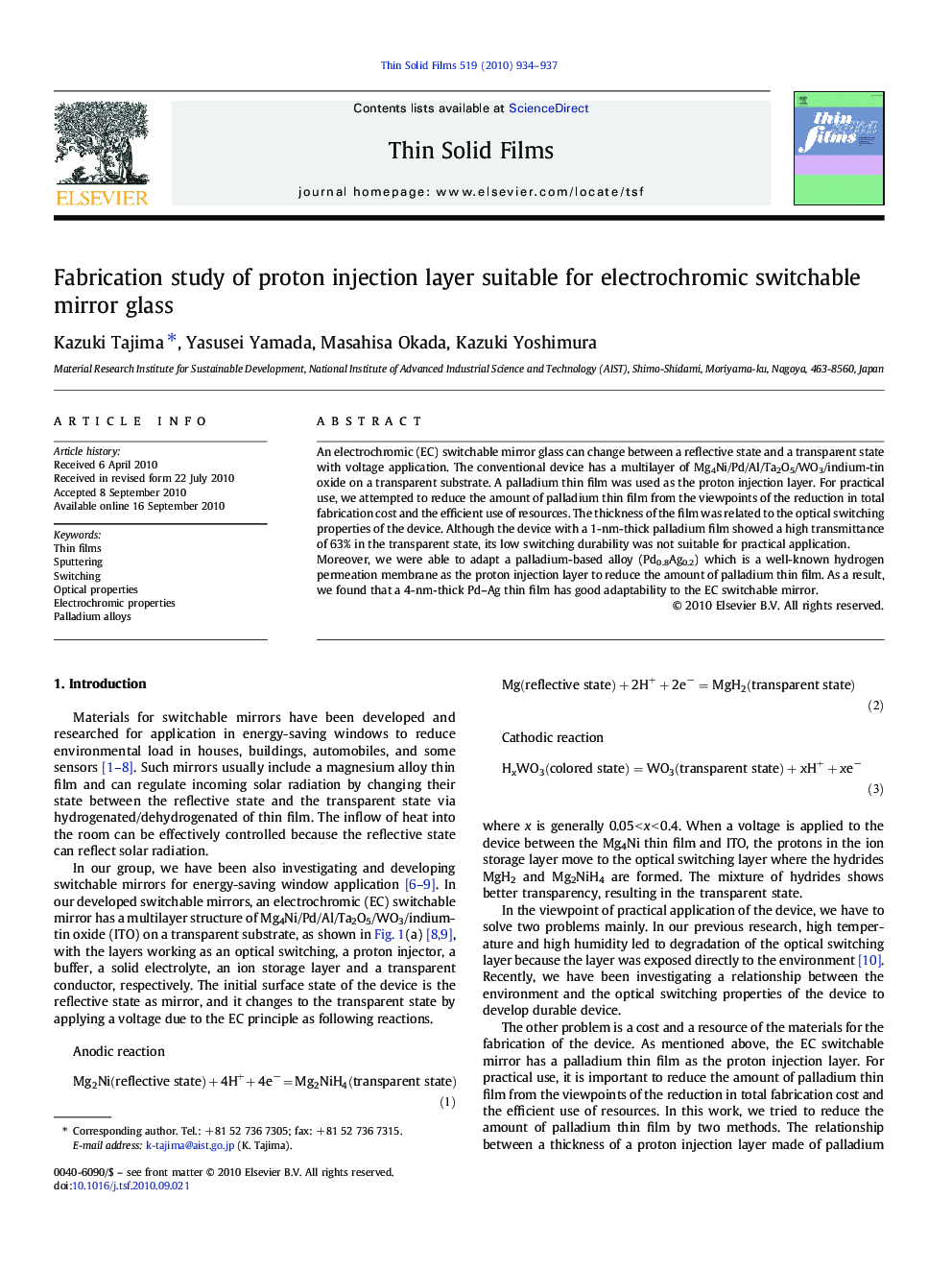| Article ID | Journal | Published Year | Pages | File Type |
|---|---|---|---|---|
| 1668758 | Thin Solid Films | 2010 | 4 Pages |
An electrochromic (EC) switchable mirror glass can change between a reflective state and a transparent state with voltage application. The conventional device has a multilayer of Mg4Ni/Pd/Al/Ta2O5/WO3/indium-tin oxide on a transparent substrate. A palladium thin film was used as the proton injection layer. For practical use, we attempted to reduce the amount of palladium thin film from the viewpoints of the reduction in total fabrication cost and the efficient use of resources. The thickness of the film was related to the optical switching properties of the device. Although the device with a 1-nm-thick palladium film showed a high transmittance of 63% in the transparent state, its low switching durability was not suitable for practical application.Moreover, we were able to adapt a palladium-based alloy (Pd0.8Ag0.2) which is a well-known hydrogen permeation membrane as the proton injection layer to reduce the amount of palladium thin film. As a result, we found that a 4-nm-thick Pd–Ag thin film has good adaptability to the EC switchable mirror.
